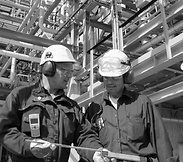Engineering and Technology Quarterly Reviews
ISSN 2622-9374




Published: 28 June 2023
Statistical Evaluation of the Mechanical Properties of Cow Dung Ash Concrete
Omoniyi Tope Moses, Duna Samson, Moh’d Abba-Gana, Rahama, B. Shu’aibu, Abdullahi Musa
Nigerian Army University (Nigeria), Nigerian Building and Road Research Institute (Nigeria), Abubakar Tafawa Balewa University (Nigeria), Kano state polytechnic (Nigeria)

Download Full-Text Pdf
10.5281/zenodo.8084826
Pages: 99-112
Keywords: Compressive Strength, Flexural Strength, Cow Dung Ash, Regression, ANOVA
Abstract
Cement is the main binder in the production of concrete for construction activities. Unfortunately, the continuous use of cement results in severe environmental and energy concerns. An established way of reducing carbon footprints and the energy demands associated with cement production is the use of supplementary cementitious material (SCMs). Most supplementary cementitious materials are processed from agro-wastes and bye-products like cow dung. Although cow dung has been utilized as manure, for heating and so on, its use is yet to match the level of production. In this study, the authors propose to investigate the strength performance of cow dung ash as SCMs. Cow dung ash is the product of controlled burning of dried cow dung. Concrete beams and cubes containing 0% to 30% cow dung ash as cement replacement were cured by complete immersion in water for 7,14,28,60 and 90 days. Compressive and flexural strengths decreased as CDA increases; and increased with curing age. Concrete made with 5%, 10%, and 15% CDA and cured for at least 60 days achieved the 28days target compressive strength of 20N/mm2. The strength test results were analysed by analysis of variance (ANOVA) and regression analysis. Proposed regression models showed a strong relationship between the strengths, CDA content and curing age. The proposed models were examined and found to be permissible
References
Adebakin I., Adeyemi A., Adu J, Ajayi F, Lawal A, Ogunrinola O (2012) Uses of sawdust as admixture in production of low-cost and lightweight hollow sandcrete blocks. American Journal of Scientific and Industrial Research, 3(6):458–463 https://doi.org/10.5251/ajsir.2012.3.6.458.463
Agrawal Y, Gupta T, Sharma R, Panwar NL, Siddique, S (2021) A Comprehensive Review on the Performance of Structural Lightweight Aggregate Concrete for Sustainable Construction. Construction Material 2021(1): 39–62 https://doi.org/10.3390/constrmater1010003
Buari TA, Ademola SA, Ayegbokiki, ST (2013) Characteristics Strength of groundnut shell ash (GSA) and Ordinary Portland cement (OPC) blended Concrete in Nigeria. IOSR Journal of Engineering 3(7) 1-7 https://doi.org/10.9790/3021-0376081
De Sario M, Katsouyanni I.K, Michelozzi, P (2013) Climate change, extreme weather events, air pollution and respiratory health in Europe. European Respiratory Journal; 42:826–843 https://doi.org/10.1183/09031936.00074712
Duna S, Omoniyi TM (2014) Investigating the pozzolanic potentials of cow dung ash in cement paste and mortars. International institute for Science, Technology and Education (IISTE) 6(8): 110-117.
Dunn PK, Smyth, GK (2018) Chapter 3: Linear Regression Models: Diagnostics and Model-Building. In: Generalized Linear Models with Examples in R. Springer Texts in Statistics. Springer, New York, NY. https://doi.org/10.1007/978-1-4419-0118-7_3
Elinwa AU, Ejeh SP (2004) Effects of the Incorporation of Sawdust Waste Incineration Fly Ash in Cement Pastes and Mortars. Journal of Asian Architecture and Building Engineering, 3(1) 1-7 https://doi.org/10.3130/jaabe.3.1
Elinwa AU, Mahmood YA (2002) Ash from timber waste as cement replacement material. Cement and Concrete Composites, 24:219–222. https://doi.org/10.1016/S0958-9465(01)00039-7
Elinwa, AU, Mbadike E (2011) The Use of Aluminum Waste for Concrete Production. Journal of Asian Architecture and Building Engineering, 10(1): 217-220. https://doi.org/10.3130/jaabe.10.217
Eren O, Brooks JJ, Celik T (1995) Setting Times of Fly Ash and Slag-Cement Concretes as Affected by Curing Temperature. Cement, Concrete, and Aggregates, CCAGDP, 17(1):11-17.
Falade F, Efe I, Fapohunda (2012) Potential of Pulverized Bone as a Pozzolanic Material. International Journal of Scientific and Engineering Research 3(7): 1-6.
Food and Agricultural organization (2010). Livestock cattle RetrievedJuly20th, 2013. from http://www.fao.org/docrep/017/i3138e/i3138e07.pdf
Garside M (2022) Cement production worldwide from 1995 to 2021 https://www.statista.com/statistics/1087115/global-cement-production-volume/
Godwin. AA, Maurice EE, Akobo IZ, Joseph OU (2012) Structural Properties of Rice husk ash concrete. International Journal of Engineering and Applied Sciences 3(3): 57-62.
Guowei Y, Dwyer M.B, Rothermel G (2009) Regression Model Checking CSE Conference and Workshop Papers. 130.
Ikponwosa, EE, Musbau, AS, Kolawole AO (2012) Structural Strength Characteristic of cement-cassava peel ash blended concrete. Civil and Environmental Research. International institute for science technology and education 2(10): 68-77
Ikumapayi, CM (2018) Properties of Groundnut Shell ash blended Portland cement. Journal of Applied Science and Environmental management 22(10):1553-1556 https://doi.org/10.4314/jasem.v22i10.03
John Pan (2011). Minitab Tutorial and Design of Experiment.
Karen, G.M (2012). Assessing the Fit of Regression Models. Newsletter release by Cornel Statistical consulting unit, Cornel University.
Mahdikhani M, Ali Akbar R (2015) New Methods Development for Evaluation Rheological Properties of Self-Consolidating Mortars. Construction and Building Materials 75 (January 2015): 136–143 https://doi.org/10.1016/j.conbuildmat.2014.09.094
Malhotra VM, Zhang MH, Read, PH, Ryell J(2000) Long-term mechanical properties and durability characteristics of high-strength/high-performance concrete incorporating supplementary cementing materials under outdoor exposure conditions, American concrete international 97: 518-525
Manasseh (2010). A review of partial replacement of cement with some agro waste. Nigerian Journal of technology, 29(2): 12-20.
Marek Harsdorff (2012). The Economics of cow dung: Creating green jobs in the dairy industry in India. (Tech. Report).International labor Organization, India.
Mehta P & Monterio P. (2006) Concrete Microstructure, Properties, and Materials. Third Edition .New York. McGraw-Hill Book.
Michael, A (2022, May,17th) Bridging Nigeria’s Infrastructure deficit through InfraCorp, Prospect, Challenges and future outlook. Business Day. https://drive.google.com/file/d/17IVeYfebTAUMDk2NKPKYuXGGodJUHnQW/view
Muche R (2008) The necessity of validating regression models--characterization of the most important methods. Rehabilitation 47(4): 243-50. German https://doi.org/10.1055/s-2008-1077068
Neville AM (2012) Properties of Concrete. Pearson Education, London
Ojedokun OY, Adeniran AA, Raheem SB, Aderinto SJ (2014) Cow Dung Ash (CDA) as Partial Replacement of Cementing Material in the Production of Concrete. Current Journal of Applied Science and Technology 4(24): 3445–3454 https://doi.org/10.9734/BJAST/2014/6447
Olusegun AA, Sam SA (2012) Methanol from Cow dung. Journal of Environment and Earth Sciences 2(7): 9-16.
Omoniyi TM, Duna S, Abba-Gana, M (2014) Compressive strength characteristics of cow dung ash cement blended Concrete. International Journal of Scientific and Engineering research 5(7): 770-776.
PavanKumar, VS, PoluRaju P (2012) Incorporation of cow dung ash to Mortar and concrete. International Journal of Engineering Research and Applications 2 (3): 580-585
Seyed AZ, Farshad A, Farzan D, Mojtaba A (2017) Rice husk ash as a potential replacement of cement in high strength concrete micro silica: Evaluating Durability and Mechanical strength. Case Studies in Construction Materials. 7 (2017): 73-81 https://doi.org/10.1016/j.cscm.2017.05.001.
Shim SH, Lee TH, Yang S.J, Noor NBM, Kim JH (2021) Calculation of Cement Composition Using a New Model Compared to the Bogue Model. Materials (Basel) 14(16):4663 https://doi.org/10.3390%2Fma14164663
Szymajda A, Grażyna L, Magdalena J (2021) Assessment of Cow Dung Pellets as a Renewable Solid Fuel in Direct Combustion Technologies. Energies 14(4): 1192 https://doi.org/10.3390/en14041192
Ugochukwu SC, Eze GC, Akabogu SC, Abubakar BH (2017) The Correlation between Foreign Exchange Rates and Prices of Building Materials in Nigeria, 2011-2017. The International Journal of Business and Management, 5(10):94-100.
University of Virginia Library (2015) Understanding Diagnostic Plots for Linear Regression Analysis https://data.library.virginia.edu/diagnostic-plots/
Worrel E, Price L, Martin N, Hendriks C, Meida O.L (2001) Carbon dioxide emission from the global cement industry. Annual Review of Energy and the Environment 26:303-332.
Zhengqi L, Kaveh A, Prasada RR (2016) Effect of alkali content of cement on properties of high performance cementitious mortar. Construction and Building Materials. 102(1): 631-639 https://doi.org/10.1016/j.conbuildmat.2015.10.110



